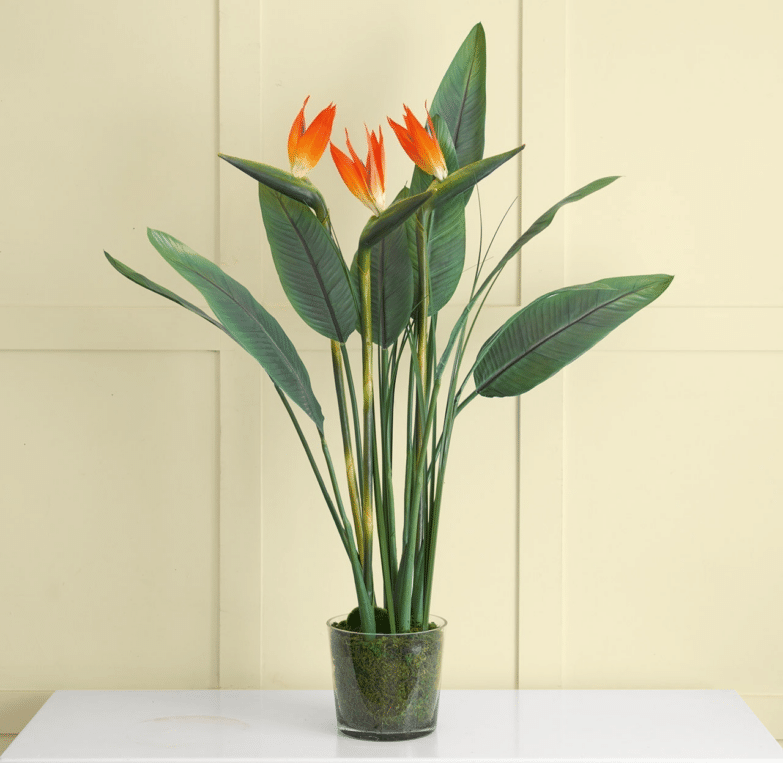The upright, broad, fan-arranged leaves of the Bird of paradise plant are attractive and exotic enough to make the plant look very decorative even when not in bloom. Healthy, sagging, intensely colored leaves indicate that the plant has excellent growing conditions.
Therefore, all types of foliage deformations are a visible reaction of the plant to adverse growth surroundings. They can be different, from yellowed leaves, dry tops or edges, to discoloration, etc, but here we talk about one of the problems that is quite common in the Birds of paradise plant cultivation: curling of leaves.
There are many reasons for this unpleasant phenomenon, of which, below we single out the four most common and how to solve them;
Insufficient watering
The leaf is the organ through which the plant breathes and exchanges matter with its environment, in the process known as transpiration. A plant that does not get enough water loses moisture faster than it compensates. The leaves begin to twist and thus reduce the evaporation area, trying to prevent water loss.
Solution: Bird of paradise plant needs regular watering, at least once a week during the growing season and once every ten days in the winter. This plant prefers moderately moist but not soaked soil. When watering, be careful and do not overdo it! Excess water can be more dangerous to the plant than deficiency!
Dry Air
Bird of paradise is a plant from warm, humid tropical areas with a metabolism adapted to elevated humidity levels in the air. Although it is adaptable and can thrive in common moisture values in the household outside the tropics, it is not rare for too dry air in its environment to cause twisting and twitching of the leaves. In fact, the plant breathes with difficulty in such conditions, and the large areas of its leaves further aggravate the whole process.
Solution: To begin, regularly spray the leaves with lukewarm, stale water or wipe them with a damp cloth. You can place the plant on a pebble tray or use a humidifier. The ideal humidity level is from 60% to even 80%! Therefore, as a good host, help your tropical beauty and raise the level above the average of 30 %.
Temperature fluctuations
In its natural habitat, the Bird of paradise plant grows in areas with mild winters and small oscillations in temperatures throughout the year. In the northern hemisphere, conditions are significantly different. There are notable differences in temperature depending on the seasons. Moreover, even during 24 hours, day and night temperatures can differ by 20 degrees or more.
Sudden changes, cold airflow, and drafts cause stress since the plant cannot adapt to them quickly enough, and often the result is curled leaves.
Solution: Place the Bird of paradise plant in a room with a constant temperature. Do not place it next to windows or doors that you often open in winter or in a room that does not heat up during the night in the winter months.
Overfertilization
Sometimes problems can arise from the best of intentions! The Bird of paradise plant loves nutritious soil, and you need to feed it regularly, especially when it is flowering and growing intensively.
Regularly, however, does not mean overdoing it since the accumulation of synthetic nutrients that the plant does not need will cause changes in the chemical composition of the soil and begin to suffocate the plant. One consequence of such conditions may be twisting of the leaves.
Solution: If you suspect that the curling of the leaves is due to over-fertilization, take the plant out of the pot and rinse the root under lukewarm water. Then leave the plant to dry a bit and transplant it into a new substrate.
If you use organic fertilizer, do not feed the plant with liquid one!. For industrial fertilizers, always follow the instructions on the package on the concentration or schedule.
And one more thing! Dilute the fertilizer as a precaution to half the recommended dose until you see how the plant reacts. It is always easier to add than to subtract!
Final thought
As you can see, curling of the leaves, and many other problems that can occur in the cultivation of these plants, mainly, are the consequence of inadequate circumstances in which the plant lives. In other words, if you know what conditions the plant needs and make an effort to provide them, you will probably avoid any of the mentioned problems.
Therefore, read our complete Bird of paradise plant guide since, after all, prevention is the best way to avoid potential problems!

